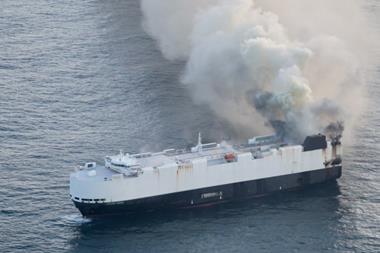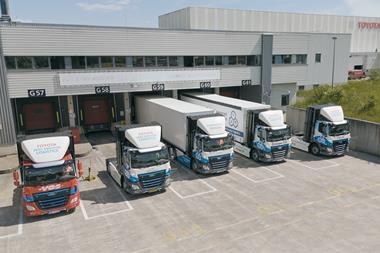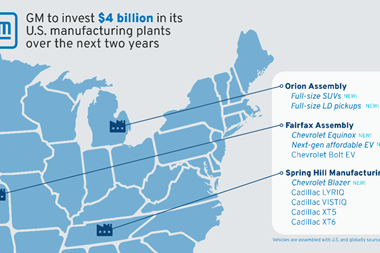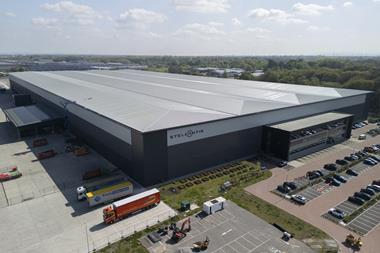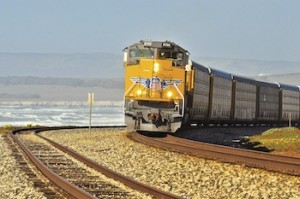 Third quarter results from the majority of the main rail companies operating in North America show revenue from the automotive sector is down or remains flat. However, declines have not as been as dramatic compared to other sectors, notably coal.
Third quarter results from the majority of the main rail companies operating in North America show revenue from the automotive sector is down or remains flat. However, declines have not as been as dramatic compared to other sectors, notably coal.
Union Pacific reported marginal revenue increase from the automotive sector, against declines in all of its other industry sectors, with the biggest drop – 18% – recorded in coal freight. As with the other main rail providers, coal shipments have declined considerably as power plants switch to burning cheaper natural gas amid as result of lower energy prices.
Automotive freight was relatively flat through the year to September 30th, showing a 3% gain to $1.6 billion. It hit $529m in the third quarter of this year up $2m from the same quarter in 2014 but down $31m compared to Q2 this year. A 5% increase in volume was offset by a 5% reduction in average revenue per car. Finished vehicle shipments were up 5% in the third quarter to 121,400 carloads compared to 115,600 carloads in 2014.
“The increase was driven by continued strength in consumer demand,” a spokesperson for Union Pacific told Automotive Logistics. “The seasonably adjusted annual rate for North American automotive sales was 17.8m vehicles in the third quarter, up 6% from last year.”
In terms of automotive parts volume, Union Pacific saw growth of 5% to 92,700 carloads compared to 88,100 carloads in 2014, driven primarily by increased vehicle production.
“Union Pacific is well positioned to distribute imported vehicles from the West Coast and Gulf of Mexico and operate or access more than 40 vehicle distribution centers for all major automotive manufacturers,” added the spokesperson. “Union Pacific offers unparalleled access to and from Mexico, as manufacturers continue to locate facilities across the border.”
Overall Union Pacific’s third quarter net income dropped to $1.3 billion compared to $1.4 billion in the third quarter 2014. The company reported that quarterly freight revenue decreased 10% compared to the third quarter 2014, as volume declines, lower fuel surcharge revenue and a “negative business mix” more than offset core pricing gains.
"Total volumes decreased about 6% in the quarter, more than offsetting another quarter of solid core pricing gains," said Lance Fritz, Union Pacific chairman, president and CEO. "On the cost side, we've made significant progress aligning our resources to current demand, and I am pleased to report a quarterly record operating ratio of 60.3%."
Fritz added that the company faced “many uncertainties” as it finished 2015 and headed into the next year. “Energy prices, the consumer economy, grain markets and the strength of the US dollar will all be key to future demand,” he said.
Soft markets
Norfolk Southern, meanwhile, has reported a 3% decline in automotive revenue in the third quarter to $246m compared to $254m in the same quarter last year and compared to the second quarter of this year, which also saw revenue of $254m. Year-to-date figures showed that Norfolk Southern’s revenue from the automotive sector has dropped to $719m, compared to $751m for the same period in 2014.
However, the number of units moved was marginally up, with almost 110,000 moved in the third quarter compared to 104,600 moved in the same quarter last year. This year (to September) Norfolk Southern has moved 316,600 vehicle units, up around 10,000 units on the same period last year.
Total net income for the quarter was $452m compared with $559m in the third quarter last year. According to the company four of the five general merchandise commodity groups reported lower revenue results on a year-over-year basis, which it said was principally the result of lower fuel surcharge revenue.
“Norfolk Southern’s third-quarter results reflect commodities markets that continue to soften, as well as costs associated with restructuring initiatives to strengthen our company going forward,” said chairman, president and CEO James A. Squires. “These pressures will linger in the fourth quarter, while traffic volume to date continues to lag last year. However, looking ahead to 2016, we are confident that with a reasonably stable economy and our own intense focus on service, returns and growth, we are poised for better results.”
Kansas City Southern and its subsidiaries recorded a 17% decline in automotive revenue for the quarter, down to $54.6m from $65.8m last year. It moved almost 32,000 units in the quarter compared to around 34,000 last year. Year-to-date figures up to September revealed an 8% drop in revenue compared to the same period in 2014 to $164m.
Mixed results in Canada
In Canada, there were more positive results for automotive revenue. Canadian National reported an increase of 13% in the third quarter to $180m compared to 2014 Q3. In the nine months to September revenue from the automotive sector went up 17% to $540m with finished vehicle traffic helping to increase net income by 18%.
“The revenue performance was mainly attributable to the positive translation impact of the weaker Canadian dollar on US-dollar-denominated revenues; freight rate increases; strong overseas intermodal demand, higher volumes of finished vehicle traffic, and increased shipments of lumber and panels to US markets,” said the company in a statement. However, as with the US providers CN reported that those results were partly offset by the lower fuel surcharge rate and by decreased shipments of coal due to weaker North American and global demand.
Meanwhile, Canadian Pacific reported automotive revenues of $87m in the third quarter of this year up $4m on the same period in 2014. However, in the first nine months of the year automotive revenue dropped $15m to $260m. Overall revenue for the company increased to $1.71 billion, a gain of 2%.
North American railroads continue to face some significant challenges, not only in terms of railcar shortages but also concerning velocity and cycle time. After making some notable gains in velocity in 2013, the sector has hit a snag over the past two years. The ‘polar vortex’ in the winter of 2014, combined with a boom in other commodities such as gas and coal, disrupted flows of vehicles on an almost unprecedented scale, leading to a surge in the ‘ground count’ of vehicles waiting to shipped. Last year that figure climbed to well over 250,000 vehicles, compared to the established standard of 70,000 vehicles. With the decline in coal shipments the disruption to flow may in some part be eased but there with the US sales recovery still in force and Mexican output set to rise to 5m units by the end of the decade, demand is higher and more complex.
For more detail on the challenges facing the North American rail sector read the latest report here






























